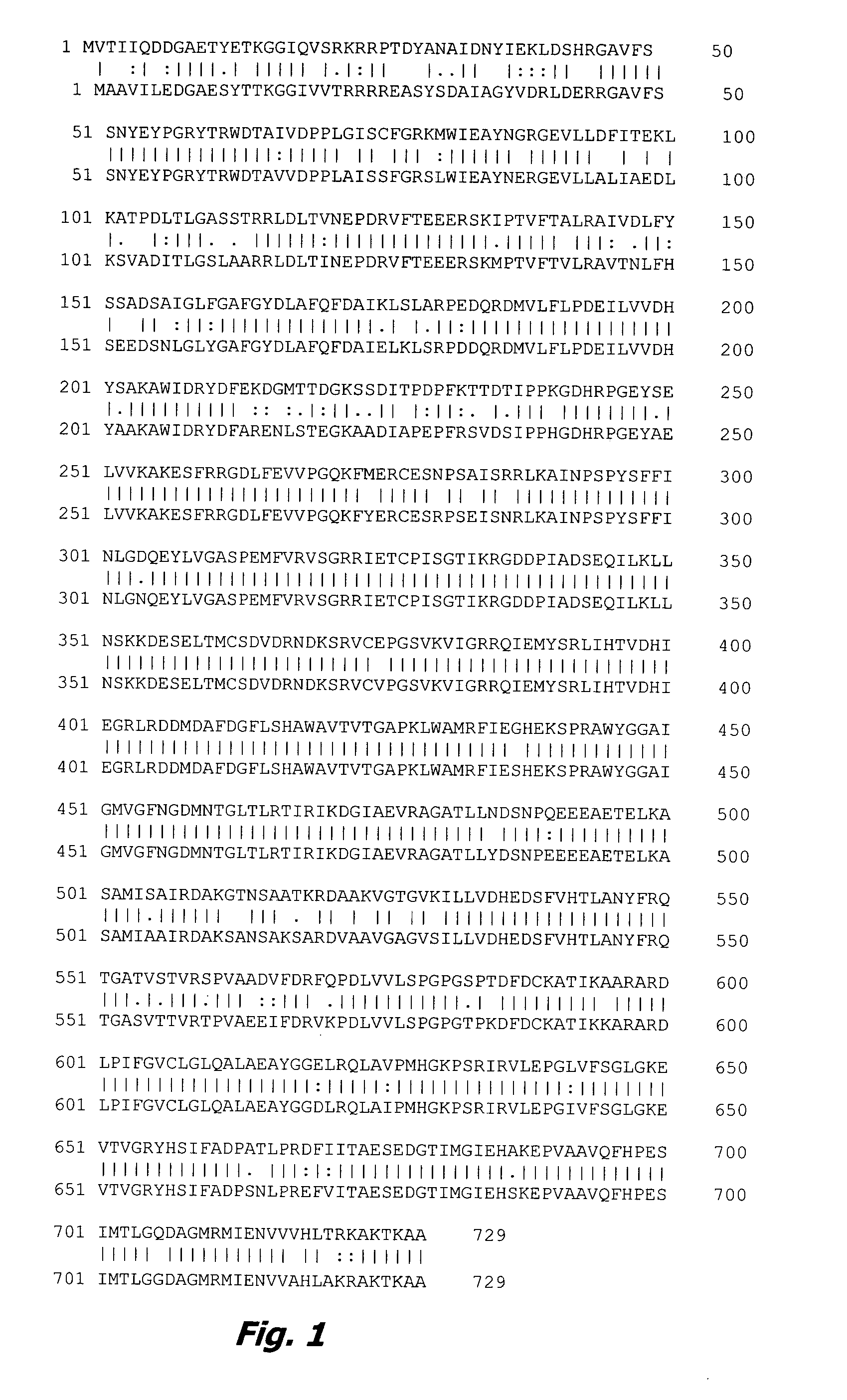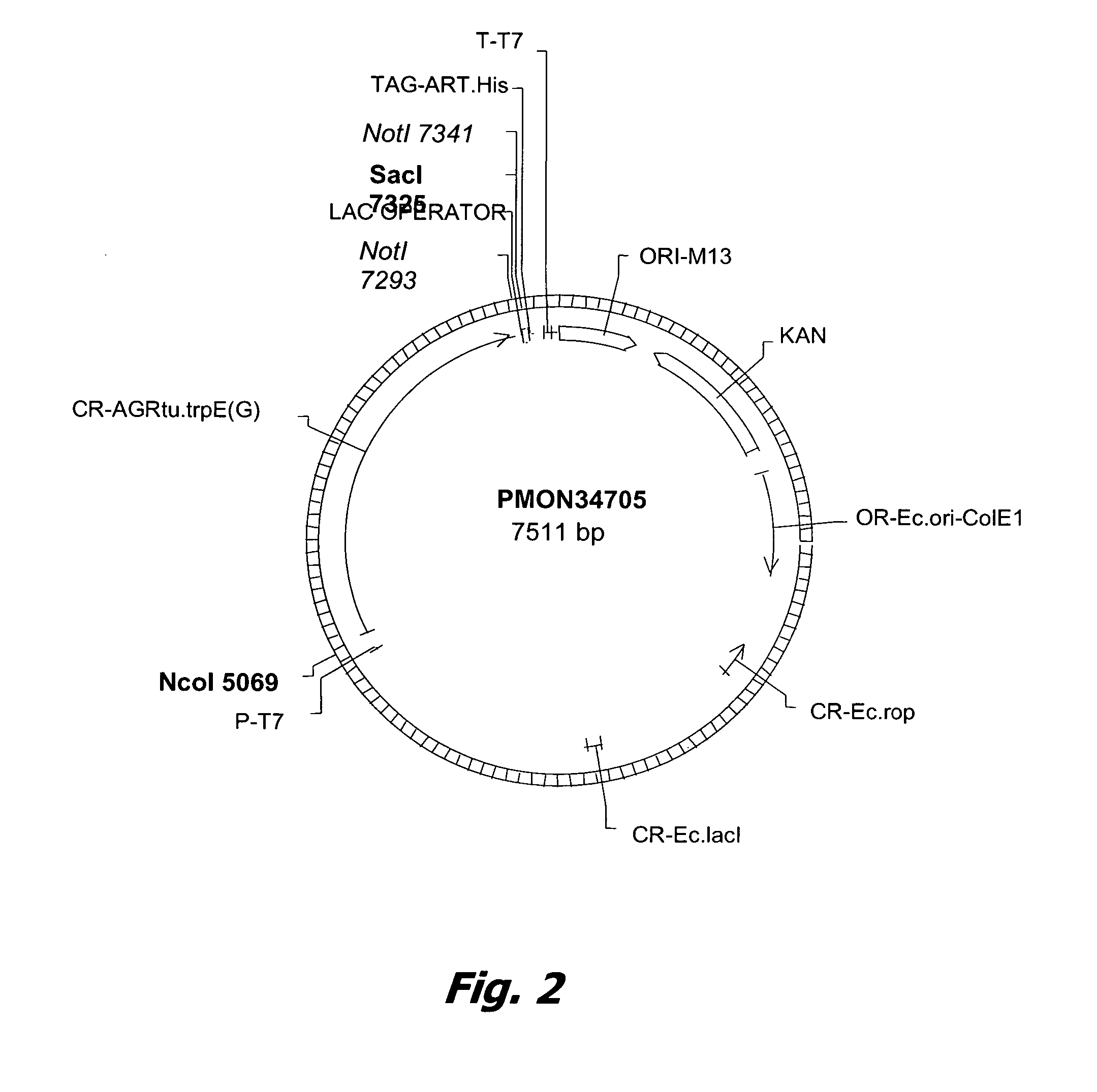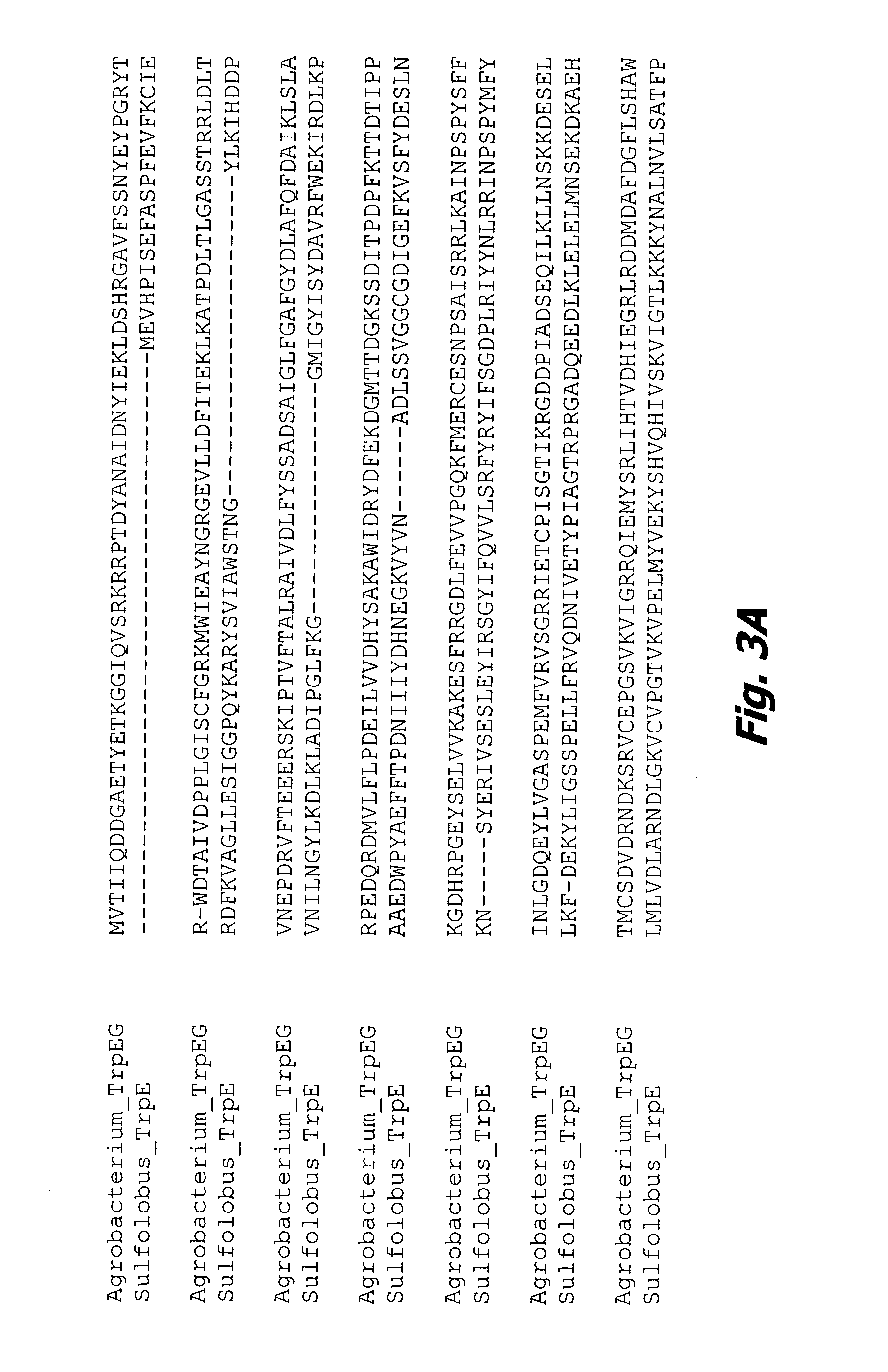High tryptophan maize
- Summary
- Abstract
- Description
- Claims
- Application Information
AI Technical Summary
Benefits of technology
Problems solved by technology
Method used
Image
Examples
example 1
Isolation and E. Coli Expression of Anthranilate Synthase from Agrobacterium tumefaciens
[0364] This example describes the isolation of anthranilate synthase from Agrobacterium tumefaciens and its expression in E. coli.
Cloning of Agrobacterium tumefaciens AS
[0365] The nucleotide and amino acid sequences of the anthranilate synthase coding region from Rhizobium meliloti (GenBank accession number: P15395) was used to search an Agrobacterium tumefaciens C58 genomic sequence database (Goodner et al., 2001). The search consisted of tblastn using blosum62 matrix, (Altschul et al., 1997).
[0366] The identified AS homolog in the Agrobacterium tumefaciens C58 genomic sequence database was cloned by PCR using genomic DNA from Agrobacterium tumefaciens strain C58 (ATCC No. 33970) as the template. The primary PCR reaction was carried out using the following primers:
5′-TTATGCCGCCTGTCATCG-3′;(SEQ ID NO: 47)and5′-ATAGGCTTAATGGTAACCG-3′.(SEQ ID NO: 48)
[0367] Gene amplification parameters were ...
example 2
High Trp Seed Levels are Achieved by Transformation of Plants with Wild Type Agrobacterium Anthranilate Synthase
Expression Vector pMON58120
[0378] The vector pMON58120 (FIG. 26) encodes a fusion between a 264 base pair Arabidopsis small subunit (SSU) chloroplast targeting peptide (CTP, SEQ ID NO: 71) and a 2187 base pair wild type Agrobacterium anthranilate synthase (AgroAS) open reading frame (SEQ ID NO: 1) (see Stark et al., 1992). Expression of this open reading frame is driven by the soy 7S alpha prime (7Sα′) promoter.
[0379] Upon translation on cytoplasmic ribosomes, the fusion (immature protein) is imported into chloroplast where the chloroplast targeting sequence is removed. There are two cleavage sites in the CTP1. The first site is 30 base pairs upstream of the CDS start (C / M), and the other is at the initial methionine (C / M). The second cleavage site does not seem to be processed efficiently. The cleavage is predicted to yield a mature protein of about 70 Kd that has AS ...
example 3
Soybean Transformation with a Vector Containing a Maize Anthranilate Synthase α-Subunit Gene
[0391] The coding sequence for a maize anthranilate synthase α-subunit was isolated from pMON52214 by digesting with XbaI in combination with a partial NcoI digest (see Anderson et al., U.S. Pat. No. 6,118,047). The resulting 1952 bp DNA fragment representing the anthranilate synthase a coding region was gel purified, and the ends were made blunt. The plasmid pMON53901 was digested with BglII and EcoRI, to generate a 6.8 Kb fragment. After isolation, the ends of the 6.8 Kb fragment were made blunt and dephosphorylated. The 1952 Kb fragment containing the ASα gene was then ligated into the blunt-ended 6.8 Kb pMON53901 fragment to generate pMON39324, a maize 7S promoter-maize ASα-NOS 3′ UTR expression vector.
[0392] This pMON39324, a maize 7S promoter-maize ASα-NOS 3′ UTR cassette, was subsequently digested with BamHI resulting in a 2.84 Kb DNA fragment, containing the 7S promoter and maize AS...
PUM
| Property | Measurement | Unit |
|---|---|---|
| Fraction | aaaaa | aaaaa |
| Temperature | aaaaa | aaaaa |
| Volume | aaaaa | aaaaa |
Abstract
Description
Claims
Application Information
 Login to View More
Login to View More - R&D
- Intellectual Property
- Life Sciences
- Materials
- Tech Scout
- Unparalleled Data Quality
- Higher Quality Content
- 60% Fewer Hallucinations
Browse by: Latest US Patents, China's latest patents, Technical Efficacy Thesaurus, Application Domain, Technology Topic, Popular Technical Reports.
© 2025 PatSnap. All rights reserved.Legal|Privacy policy|Modern Slavery Act Transparency Statement|Sitemap|About US| Contact US: help@patsnap.com



